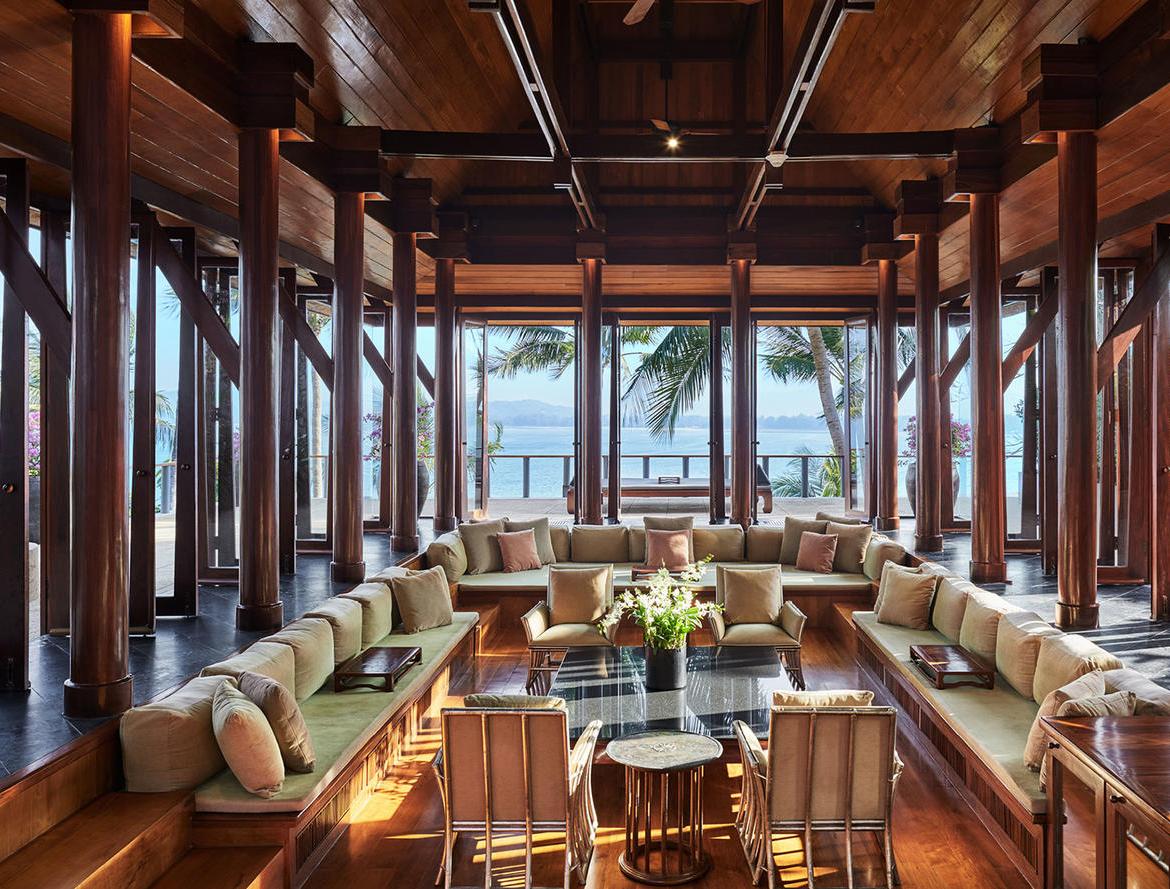Thailand Food Secrets: Best Unknown Dishes You Need to Try
When Bangkok’s markets awaken and woks flare like signal fires, I landed in the gentle blue hour before dawn. It’s when Thailand food culture comes alive, with vendors pushing carts full of herbs, aunties bringing aromatics to life, and a buzz of excitement before the first bite of the day. This trip offers a nationwide atlas of flavors—Thailand culinary tales woven from alleys, shophouses, night bazaars, and island kitchens—for those who have only tasted pad thai and green curry.
What follows is a way to read landscapes through bowls and grills, not a checklist. Imagine it as your conductor’s score to Thai cuisine that you don’t often see on glitzy menus: dishes derived from seafaring trade, monsoon soils, and auntie-guarded recipes that shine at dusk like lanterns. Be inquisitive. Be respectful. Don’t forget to pack an extra stomach.
How to Eat Adventurously Thailand food (and Kindly)
Ask questions and start small. Point, smile, and say “mai phet” (not spicy) or “phet nit noi” (a little spicy) at a crowded stall. Cooks are happy to guide you through Thailand food, which can range from mild to scorching. Order a half portion and watch it come together if a pot looks strange. Tasting Thai food the way the locals truly enjoy it is the reward of adventurous eating, which combines conversation and dance.
Ask your host to set up a morning market walk with the chef if you are staying in a private villa. You’ll see what Thai cuisine means in everyday life: raffia-tied bunches of holy basil, fish that gleam like polished pewter, and chilies that have a rainy scent. Once you’re back in the kitchen, you’ll discover how adding a pinch of palm sugar or a squeeze of calamansi can transform a dish from mediocre to amazing.

Northern Notebook: Slow Fire and Forest Greens
Earthy, smoky, and comforting are the minor keys in which the north cooks. Go for gaeng hang lay, a curry made with pork and tamarind, ginger, and garlic that has a Burmese influence. Its sweetness purrs rather than shouts. The jackfruit curry known as kaeng khanoon, which has a herbaceous sway and fibrous warmth, is another discovery. Foraged greens, traditional spices, and the slow patience of mountain kitchens are the main ingredients of Thai cuisine.
Look for khao kan jin, also known as khao ngiao, which is rice infused with pork blood and cooked in banana leaves until it is soft, then garnished with crispy fried shallots and garlic. Breakfast is a silent texture wonder in the alleyways of Chiang Mai. Add nam phrik noom, a green-chili dip from the north that goes well with sticky rice. Thailand food is based on smoke: eggplants that have been softened by fire, chilies that have blistered over coals, and a robustness that makes you want to eat more.
Isan, the Wild Northeast: Char, Lime, and Lightning
Isan cuisine is grilled, bright, and quick, making it ideal for road trips. Go deeper with tom saep, a hot and sour soup that crackles with lemongrass, galangal, and toasted chili. You’ve probably heard of som tam. In a bowl, there is a chase scene. Next, sample larb pla duk, a crunchy, zesty, and aromatic minced catfish salad adorned with roasted rice powder. Here is where Thailand food showcases its passion for herbs: the snap of fresh scallions, sawtooth coriander, and mint by the fistful.
Don’t miss the roadside grilled chicken known as kai yang Korat, which is marinated with white pepper, garlic, and coriander root before being lacquered over charcoal. It transforms a plastic stool into a throne with sticky rice and a spicy jaew dipping sauce. Isan is evidence that Thailand food thrives on simplicity: two or three ideal elements—heat, acid, and char—balanced like a tightrope walker.

Central Lowlands and Bangkok: River Barge Riches
Boat noodles, or kuay teow reua, are dark broths flavored with cinnamon, star anise, and a hint of blood for body that originated in Bangkok’s canals. They come in small bowls, so you can order more than one without worrying. With its quick-service genius, big flavor, and compact footprint, this is Thailand food with a city edge. In other places, try the robust, peppery, and backbone-rich rice noodles known as chase khanom chin nam ya pa, which are swirled with a fiery fish curry sauce.
Look for kuay tiew lord, which are steamed rice noodle rolls topped with crunchy bean sprouts, black pepper, minced pork, and sweet soy sauce. You can also add some garlic as a garnish. The type of Thailand food that vanishes more quickly than your jet lag. You can follow your nose to a stall serving kuay jub, which is rolled rice noodle soup with peppery broth and squares of braised pork belly. Chinatown is a moonlit map of steam and neon.
Southern Shores: Monsoon Heat and Ocean Bright
The spices turn Technicolor as you move south. Kua kling, a dry curry made with minced meat and smashed with fresh chilies and turmeric, doesn’t ask for attention—it grabs it. Though it sounds intimidating, gaeng tai pla, a fiery curry made from fermented fish entrails, tastes like thunderheads over coconut groves: rich, stormy, and unforgettable. Thai cuisine here enjoys bite and bitterness just as much as the sea does rock.
Additionally, there is moo hong, a Sunday afternoon-mellow braised pork belly prepared in the Phuket style with cinnamon and soy aromas. Don’t forget to try sataw, which is a dish of shrimp or minced pork mixed with sataw (stink beans). Once you start eating it, the pungency becomes euphoric. Oh aew, a local shaved-ice dessert laced with banana jelly, is a perfect way to cool off when the sun is high. It’s like childhood in a glass. It’s the delightful sequel to the poetic aggression of southern Thai cuisine.

Island Tables, Private Kitchens
Meals on the islands are best enjoyed with bare feet and a silky horizon. If you’re traveling with family or friends, think about booking a private base where you can eat dinner whenever you want, by your pool, and beneath a constellation-filled sky. With hand-pounded curry pastes, market-fresh fish, and a chef who remembers that you prefer extra lime with your tom saep, Haute Retreats creates villas where Thailand food is transformed into a private performance.
The fully staffed, oceanfront Villa Amarapura in Phuket is a show-stopper, with a dining area that blends into the starlight and sea breeze. It is designed for lengthy lunches and speciality dinners, the kind of Thai culinary experiences that depend on timing—curry served when it sings, grilled prawns the moment they are cooked to perfection.
A sleek, contemporary setting for seafood feasts and leisurely breakfasts that extend into the afternoon is provided by Villa Roxo, which is located up the coast close to Natai Beach. Villa Anavaya on Koh Samui is conveniently located near the island’s beaches and the airport, making it a great place for late-night swims and sunset dinners.
Street Sweetness and Morning Cups
Make room for khanom tuay, which are little cups of sweet-salty steamed coconut custard flavored with pandan. Or get some khao lam, which is sticky rice with a caramel-edge and a smoky roast in bamboo. The best bites of Thailand food are frequently served warm from a cart, making it a foodie’s paradise. Order oliang (Thai iced coffee) that tastes like the city waking up or cha yen (Thai iced tea) with the breeze from the river for a caffeine fix. The edible equivalent of a hug before the heat returns is a bowl of jok (rice porridge) with ginger and a soft egg at dawn.

Sea, Farms, and Markets: Why These Dishes Matter
These plates aren’t “unknown” for the sake of being obscure. It’s how they interpret the terrain. In the northeast, char, lime, and herbs reflect sun-baked plains and open roads, while in the north, forest greens and smoke give Thailand food a tactile and grounding quality. While the south embraces monsoon-soaked spices and sea funk that could only have developed where storms meet reefs, Bangkok communes with its rivers through boat noodles. To read the nation out loud is to eat widely.
How to Find the Good Stuff (Without Being That Tourist)
Pay attention to the lines, not the pictures. If there is a line of teenagers and grandmothers at a stall, join it. Don’t haggle over food; ask vendors what’s freshest. Observe how locals season their food in markets—do they add more lime or chilies?—and modify your bowl accordingly. If you approach Thai food vendors with humility, they will be generous teachers. Learn the following small phrases: “khap khun krub/kha” (thank you), “aroi mak” (delicious), and the golden “kin len dai mai?” (can I taste?). Here, a smile is a passport that has seen many journeys.

Your Villa as Classroom
Consider the kitchen to be a classroom if you’ve made your home in a Haute Retreats villa. Request that the chef demonstrate how to make curry paste from scratch using ingredients like lemongrass, galangal, shrimp paste, shallots, and coriander root, which should be pounded one after the other until the paste is warm to the touch. Ask for a lesson in the art of grilling river prawns, which involves not touching them until they come off the metal clean. When you handle the ingredients yourself and let the aromas linger in your memory like music, Thai cuisine takes on a whole new dimension.
Three Regional Tastings to Plan
- 1) Chiang Mai Morning: a bowl of hang lay accompanied by iced coffee, a market breakfast of khao kan jin with nam phrik noom, and a snack of sai ua (northern sausage). Three flavors—smoke, comfort, and slow-simmered patience—are used to describe northern Thai cuisine in this flight of flavors.
- 2) Isan Roadside Lunch: a plate of larb pla duk, a tumbler of tom saep, and Kai yang Korat with sticky rice. Thai food that sounds like a drive with the windows down is bright, noisy, and hard to stop eating.
- 3) Phuket Dusk: As the day turns to night, enjoy a tumble of sataw with shrimp, a finale of oh aew, and a Moo hong over jasmine rice. This is spicy, sea-flavored cuisine from southern Thailand.
Unknown Dishes You’ll Brag About (Quietly)
- Northern jackfruit curry, or gaeng khanoon, is a comforting, fibrous, herbal dish that demonstrates how plants can act as armor. A seldom-read chapter on Thai cuisine that pairs well with sticky rice.
- A liquid wake-up call that awakens the senses, Tom Saep (Isan hot-sour soup) is peppery, lemongrass-forward, and energizing. This Thai cuisine is designed to gain momentum during the week.
- A tumble of curry paste and minced meat that is stir-fried until every crumb hums with heat is known as kua kling, or southern dry curry. The minimalist poem about the cuisine of southern Thailand.
- A hug in a clay pot, Moo Hong (Phuket braised pork) is tender, soy-kissed, and subtly spiced. Thai cuisine that is comforting and wins every table.
- Boat noodles, or kuay teow reua, are made with noodles in palm-sized bowls in a reduced, spiced broth; when finished, arrange them in a proud tower. Thai cuisine with river roots that was born in the city.
- The two-tone bite of khamom tuay (steamed coconut cups), with its sweet base and salty cap, demonstrates that desserts can be well-balanced. Thai snacks to cap off the evening.

Where to Stay When Food Is the Itinerary
The purpose of planning a day around meals is to make it feel decadent. In order to bring back blue swimmer crabs and baby squid for a twilight grilling session, Villa Amarapura’s staff can set up a longtail boat to coastal markets on Phuket. Imagine a bowl of tom saep, a platter of sataw, and a lunch of kua kling eaten poolside as Villa Roxo’s modern lines frame the Andaman like a widescreen up near Natai Beach. With cicadas, a warm breeze, and a constantly shifting horizon, Villa Anavaya’s location on Koh Samui transforms an early dinner into a theatrical experience.
Cooking With a Villa Chef: A Day Built Around the Table
With a woven basket and your chef, the morning begins at the market. As fish heads are split for stock, you can hear the crack of a cleaver against wood and smell the scent of bruised lemongrass. Here, the supply chain for Thai cuisine is visible: farmers bring banana blossoms, boats unload shrimp, and curry pastes change color according to the season. Back at the villa, woks flare, knives align like pencils, and a lesson starts. Taste how fresh chilies leap when they come into contact with hot oil as you pound turmeric into kua kling paste.
Dinner is a parade, complete with a bowl of rice fragrant with pandan, a platter of herbs that you roll into lettuce cups, and a southern curry that was turned down one click for the spice-shy. Because Thai food is geography you can drink, chew, and spoon, discussions over the table shift to topics like landscapes and tides. Ask the chef to record the recipe on your phone so you can cook it at home and remember the salt on the wind if a dish becomes a favorite.
Haute Retreats Villas for Food-Led Travel
The fully staffed, oceanfront Villa Amarapura on Phuket’s eastern shores offers the kind of setting that makes meals feel like a movie; it’s made for long tables and longer stories. Schedule a private tasting to enjoy three different southern curries, grilled shellfish, and pandan sweets as the sea turns indigo. You’ll hum this slow crescendo of Thai cuisine for years to come. Imagine a chef’s counter by your pool and a platter of day-boat prawns coated in lime. Villa Roxo’s lines are clean and its atmosphere is contemporary up at Natai Beach.
Do you like a resort-villa combination? For an iconic address with nearly telepathic service, think of the Amanpuri villas in Choeng Thale. With a breakfast of tropical fruit and rice porridge beneath a rustling palm, a lunch of boat noodles by the pool, and a southern-curry dinner served as the Andaman breathes out, a day centered around Thai cuisine feels effortless here. The flavors emerge and the logistics fade when Haute Retreats serves as your gateway.

A Few Practicalities
- Ask for “phet nit noi” and build up your spice intake. Balance, not bluster, is the key to great Thai cuisine.
- Cleanliness: Ingredients are quickly turned over at busy stalls. Your cue is that. You’re in the right place for Thai food if the wok never cools.
- Pay with small bills. You’ll be able to follow the rhythm that makes Thai cuisine so easy, and the vendors will appreciate it.
- Timing: Early and late market peaks occur. There are always bowls of boat noodles and plates of moo hong nearby, but the midday heat slows things down. Thai cuisine has its own rhythm, which is worth paying attention to.
The Point of the Journey
Your palate learns new grammar through travel. Unknown foods are dialogues with people, places, and seasons rather than awards. Thailand food is a language you pick up one bite at a time, whether you’re eating it at a family table covered in fish sauce, on a stool by a gutter, or in the shaded sala of a villa. Arrive hungry, depart inquisitive, and take home the flavors as mementos you can prepare—and distribute.
Make your own tasting map before you book flights. Mark a few stalls, circle markets, and allow for chance encounters. Allow Thai cuisine to influence your morning routine, your neighborhood strolls, and even the times you choose to go swimming. Thai cuisine becomes a ritual in a villa: coffee in the morning, a lesson at noon, and a grill at dusk. When traveling, Thai cuisine turns into a shorthand for greetings and recommendations from strangers. When you return home, Thai cuisine becomes a recipe that becomes a welcome guest on your weeknights.
For travelers who chase Thailand food, respect Thailand food, and celebrate Thailand food, consider this your map to Thailand food that’s still unknown—and unforgettable.







